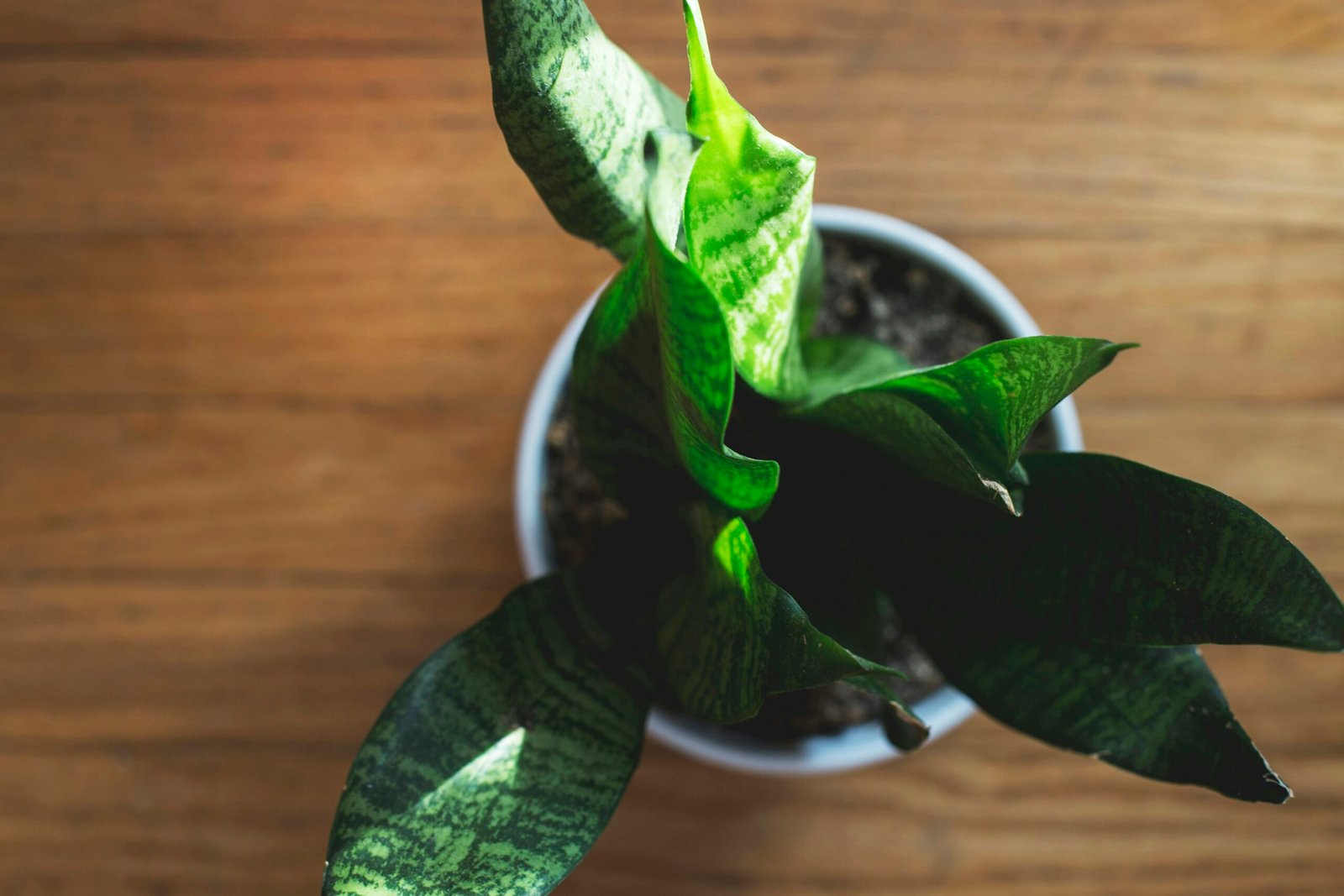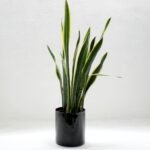Snake plants, scientifically known as Sansevieria trifasciata, have gained considerable popularity among houseplant enthusiasts and casual gardeners alike. Native to the tropical regions of West Africa, these succulents are characterized by their rigid, upright leaves that display a striking pattern akin to a snake’s skin—hence the common name. Their aesthetic appeal is complemented by remarkable resilience, allowing them to thrive in a variety of indoor environments.
One of the primary reasons for the widespread adoption of snake plants is their air-purifying qualities. Research conducted by NASA in the late 1980s highlighted the plant’s ability to filter toxins such as formaldehyde, benzene, and xylene from the air, making it an ideal choice for improving indoor air quality. Furthermore, snake plants contribute to higher oxygen levels, promoting a healthier living space. This dual function not only enhances the ambiance of a home but can also benefit overall well-being.
In addition to their functional attributes, snake plants are also exceptionally low-maintenance, which makes them suitable for individuals with varying levels of gardening experience. They can tolerate neglect and thrive in low light conditions, making them perfect for homes and offices alike. This resilience, coupled with their striking appearance, establishes snake plants as a favored option for both novice and experienced plant owners seeking to enrich their surroundings.
Understanding the care requirements of snake plants is essential for maintaining their health and appearance. Proper watering techniques, light conditions, and potting choices can significantly influence their growth and longevity. A comprehensive knowledge of these factors will enable owners to cultivate a thriving snake plant, enhancing the beauty of their space while reaping the benefits of cleaner air.
Optimal Growing Conditions
Snake plants, scientifically known as Sansevieria, are renowned for their resilience and adaptability, making them an excellent choice for indoor gardening. To cultivate these plants successfully, understanding their optimal growing conditions is crucial. Snake plants thrive in bright, indirect light environments, though they can also tolerate low-light situations. This characteristic allows them to fit well within diverse indoor settings, such as office spaces, living rooms, and even bathrooms, where lighting conditions often vary.
When it comes to temperature, snake plants prefer a range of 60°F to 80°F (15°C to 27°C). They are sensitive to extreme temperature fluctuations, particularly cold drafts, which can severely affect their growth. Therefore, positioning your snake plants away from windows, air conditioning vents, or heaters is essential, as these factors can create inexplicable temperature changes that may lead to plant stress.
Humidity levels also play a vital role in the health of snake plants. They thrive in moderate humidity conditions but can adapt to lower levels, making them suitable for typical household climates. However, if the air in your home is excessively dry, consider misting the leaves occasionally or placing a pebble tray filled with water beneath the pot to enhance the humidity around the plant. Balancing these factors – light, temperature, and humidity – creates a conducive environment that fosters healthy growth for snake plants. By ensuring optimal conditions, you can enjoy the beauty and air-purifying benefits these remarkable plants offer.
Watering and Feeding Guidelines
Snake plants, also known as Sansevieria, exhibit a remarkable resilience to varying environmental conditions, chiefly due to their unique structure and water-storage capacity. However, proper watering remains crucial to their health, as overwatering is one of the leading causes of root rot in these plants. To maintain optimal moisture levels, it is essential to adopt a tailored watering schedule based on seasonal variations and soil moisture.
During the growing season, which typically spans from spring to early fall, snake plants should be watered more frequently. A good rule of thumb is to allow the top 1-2 inches of soil to dry out completely before watering. Generally, this would amount to watering every 2-4 weeks, depending on the humidity and temperature of the environment. In contrast, as the temperatures drop in the fall and winter, the plant enters a dormant phase where it requires significantly less water. During this period, watering every 4-6 weeks is often sufficient, ensuring the soil remains dry to prevent the onset of root rot.
When it comes to feeding snake plants, it is recommended to use a diluted liquid fertilizer, preferably one that is balanced and low in nitrogen. Fertilization should occur during the active growth period, about once a month, to support healthy development without overwhelming the plants. It’s important to refrain from fertilizing during the dormant months, as this can lead to nutrient buildup in the soil, which the snake plant cannot effectively utilize. By adhering to these watering and feeding guidelines, you can foster a thriving environment for your snake plants, ensuring their continued growth and vitality.
Common Issues and Troubleshooting
Snake plants, also known as Sansevieria or mother-in-law’s tongue, are generally hardy and resilient. However, even the most robust plants can face challenges due to pests, diseases, or environmental stress. Identifying these problems early is crucial for maintaining the health and longevity of your snake plant.
One common issue is the presence of pests such as spider mites, mealybugs, and aphids. Owners may notice white, cottony masses or fine webs on leaves, which indicates an infestation. Additionally, yellowing leaves can signal either overwatering or inadequate light conditions. Under such circumstances, it is important to evaluate your plant’s watering routine and light exposure. Ensuring your snake plant receives bright, indirect sunlight while allowing the soil to dry between waterings is vital.
Another concern is root rot, often characterized by mushy, discolored roots and a foul odor. This problem can arise from excessive moisture in the potting mix, leading to fungal infections. To address this, inspect the roots, remove any that appear rotten, and repot the plant in well-draining soil to ensure proper moisture levels. Inadequate humidity can also lead to drooping or curling leaves, as snake plants thrive in moderate to high humidity. A simple solution is to mist the leaves periodically or place a humidity tray near the plant.
In cases of environmental stress, sudden temperature changes or drafts may cause distress, evidenced by drooping stalks. Keeping the plant in a stable environment away from drafts and extreme temperatures is essential. Regularly inspecting your snake plant for signs of distress enables timely intervention, ensuring that it remains vibrant and healthy.





